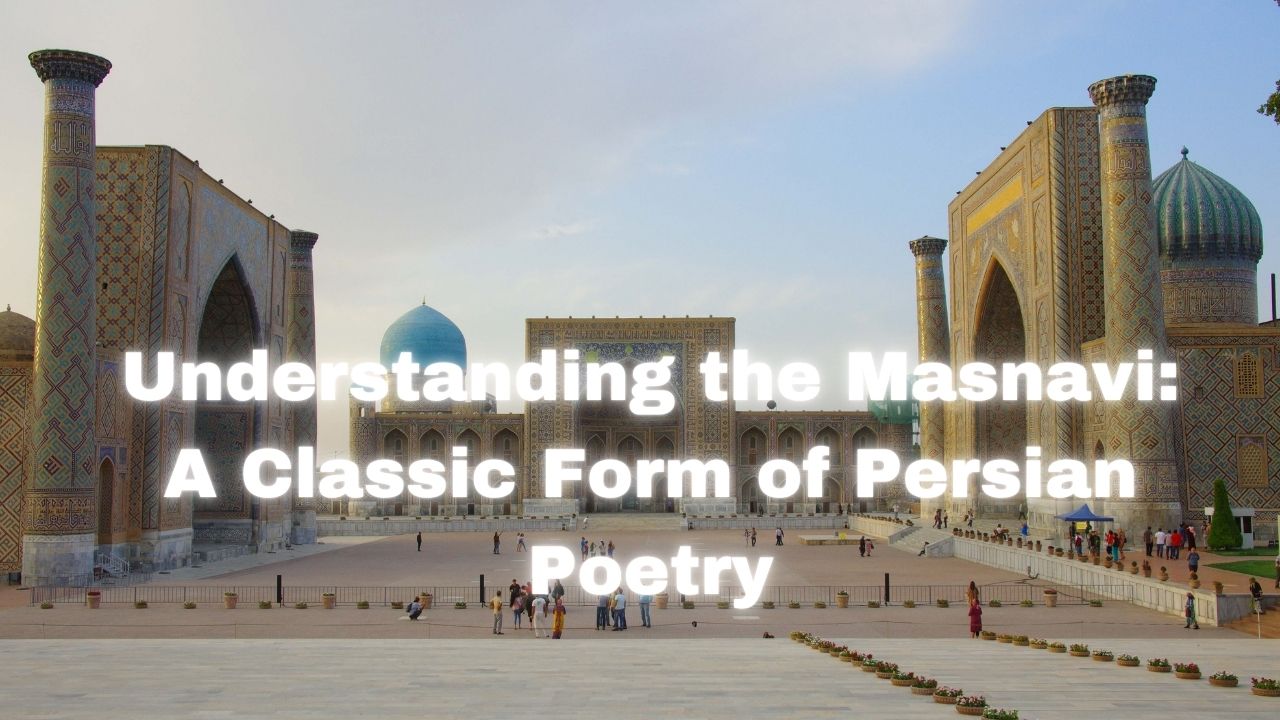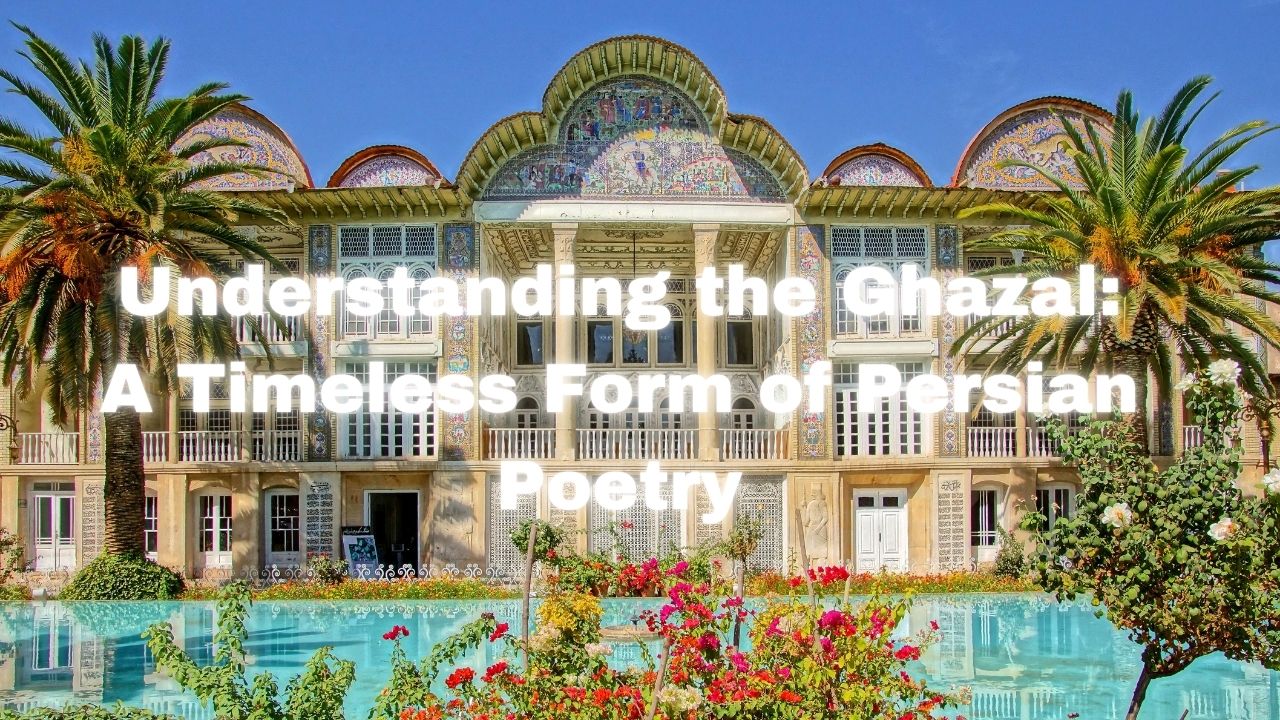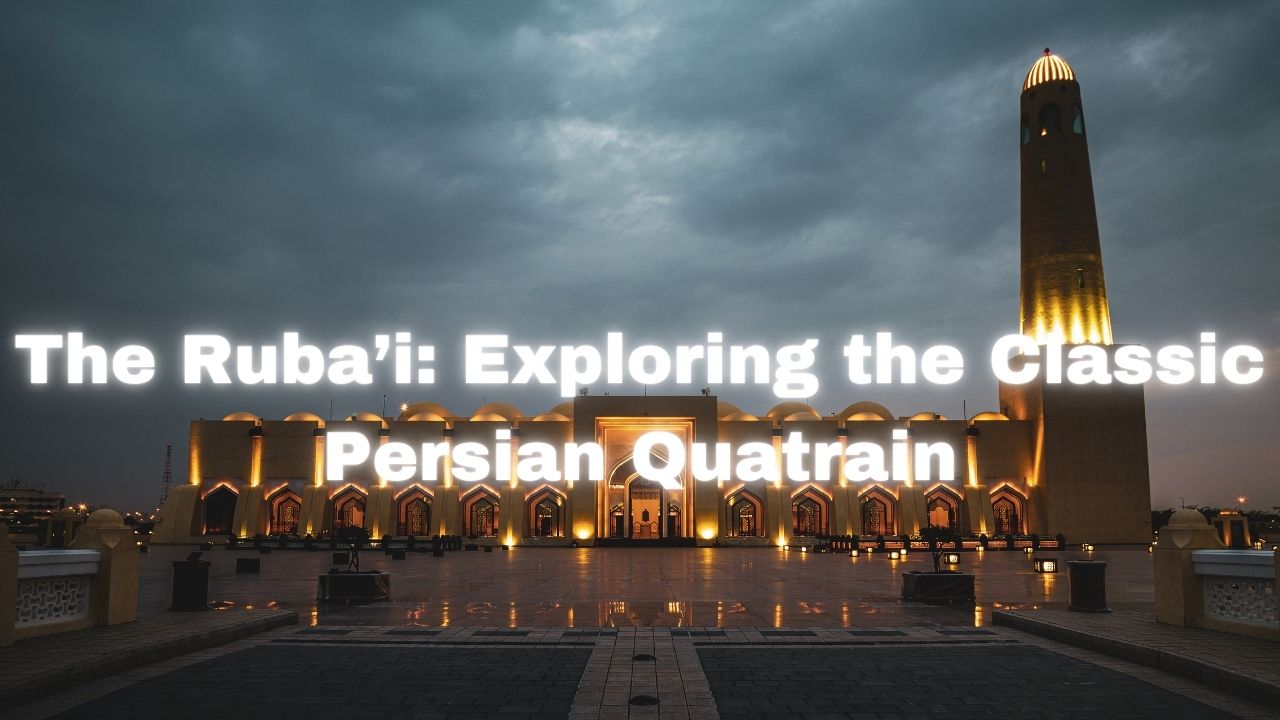Exploring the Structure, Themes, and Legacy of the Persian Masnavi
Among the many treasures of Persian poetry, the masnavi (مثنوی) stands out as a highly regarded poetic form known for its storytelling potential and capacity to convey deep spiritual, philosophical, and moral lessons. The masnavi has been employed by some of the greatest poets in Persian literary history, including Rumi, Attar, and Nizami, who have used it to craft epic tales, allegories, and spiritual treatises that continue to inspire readers today.
In this blog post, we will delve into the structure of the masnavi, its thematic richness, and the reasons why it has endured as one of Persian literature's most iconic poetic forms.
What is a Masnavi?
The masnavi is a form of Persian poetry that consists of rhyming couplets, with each line in a couplet rhyming independently from the others. This rhyme scheme—aa, bb, cc, dd, and so on—gives the masnavi a unique rhythm that lends itself well to long narrative poems, making it ideal for epics, didactic poetry, and spiritual texts. In Persian, the word "masnavi" comes from the root "mathna," meaning "two by two" or "in pairs," which refers to the rhyming couplets that make up the poem.
Because of its flexible structure, the masnavi is often used for long-form poetry and is particularly suited to storytelling. It allows poets to unfold elaborate narratives, express philosophical ideas, or guide readers through spiritual allegories. The most famous example of this form is Rumi's Masnavi-i Ma’navi (The Spiritual Masnavi), a monumental work of Sufi mysticism that is revered as one of the greatest masterpieces of Persian literature.
Structure of a Masnavi
The masnavi's structure is distinctive and conducive to storytelling:
-
Rhyming Couplets: The hallmark of the masnavi is its rhyme scheme, where each couplet follows the pattern aa, bb, cc, etc. This gives the poem a continuous flow, making it ideal for narratives that span hundreds or even thousands of lines.
-
Unrestricted Length: Unlike other poetic forms such as the ghazal, which are often limited to a handful of couplets, the masnavi can be of virtually any length. This makes it suitable for epics and long discourses. Some masnavis, like Nizami's Khamsa, consist of thousands of verses.
-
Meter: The masnavi follows a specific meter, which varies depending on the poem. The meter helps to maintain rhythm and musicality across the long span of the poem, adding to its oral recitability and impact.
-
Narrative Focus: While each couplet in a masnavi can be read independently, the form is primarily used for long, connected narratives. This sets it apart from the ghazal, where each couplet often stands alone in meaning. In a masnavi, the poet tells a story, develops a philosophical argument, or guides the reader through a spiritual journey over the course of many lines.
Themes in Masnavi Poetry
Because of its versatility and length, the masnavi has been used to explore a wide range of themes, from love and romance to spirituality and moral teachings. Below are some of the key themes often found in masnavi poetry:
-
Spirituality and Sufism: One of the most significant uses of the masnavi form is for Sufi mysticism, where the poem serves as a guide for spiritual seekers on their path toward union with the divine. Rumi’s Masnavi-i Ma’navi is perhaps the most famous example of this, as it uses stories, allegories, and teachings to illustrate the journey of the soul toward God. This work has been described as a "Quran in Persian" because of its deep spiritual insights and its role in teaching Sufi philosophy.
-
Romance and Love: Many masnavis also focus on the theme of romantic love, often exploring the tension between human and divine love. In Persian poetry, earthly love is often portrayed as a metaphor for divine love, and the masnavi is frequently used to tell stories of longing, separation, and union. A classic example is Nizami’s "Layla and Majnun", an epic tale of star-crossed lovers that also serves as an allegory for the soul's desire for union with the divine.
-
Epic and Heroic Tales: The masnavi form is also used for recounting epic stories of heroism, chivalry, and adventure. Ferdowsi’s "Shahnameh", the Persian "Book of Kings," although not in masnavi form itself, shares thematic similarities with masnavi poetry in its focus on the heroic deeds of legendary figures and kings. Many later poets adopted the masnavi form to tell their own epic tales.
-
Moral and Ethical Teachings: Another common use of the masnavi is to convey moral and ethical lessons. Through allegories, parables, and fables, poets like Attar in his work "The Conference of the Birds" use the masnavi form to explore themes of selflessness, humility, and the pursuit of wisdom. These stories often carry didactic messages, helping the reader to reflect on their own moral and spiritual development.
Famous Examples of Masnavi Poetry
Several notable poets have contributed masterpieces in the masnavi form, each making their mark on Persian literature:
-
Rumi’s "Masnavi-i Ma’navi": Perhaps the most famous masnavi of all time, Rumi’s six-volume work is a spiritual epic that uses stories, parables, and discourses to guide the reader through the stages of spiritual enlightenment. Written in rhyming couplets, Rumi’s masnavi covers topics ranging from the nature of love to the mysteries of existence, all framed within a Sufi understanding of the divine.
-
Nizami’s "Khamsa": Nizami’s Khamsa, or "Quintet," is a collection of five masnavis that includes romantic epics, moral tales, and historical narratives. Among these, the most famous is "Layla and Majnun", a tragic love story that has become a symbol of devotion and yearning in Persian literature. Nizami’s mastery of the masnavi form allowed him to weave together intricate narratives filled with rich symbolism and emotion.
-
Attar’s "The Conference of the Birds": In this allegorical masnavi, the poet Attar tells the story of a group of birds on a quest to find their king, a journey that symbolizes the soul’s search for God. Along the way, the birds encounter various challenges and receive spiritual lessons. Attar’s work is both a spiritual guide and a moral allegory, using the masnavi form to present profound insights into the nature of existence.
-
Jami’s "Yusuf and Zulaikha": Jami, a later Persian poet, used the masnavi form to retell the story of Yusuf (Joseph) and Zulaikha from Islamic tradition. This romantic and spiritual narrative explores the themes of love, beauty, and divine intervention, reflecting the influence of both earlier Persian poets and Islamic teachings.
Why the Masnavi Endures
The masnavi endures as a beloved form of Persian poetry for several reasons. Its flexible structure allows poets to tackle complex themes and create elaborate, multi-layered narratives. At the same time, its consistent rhyme and meter give the poem a musical quality that makes it enjoyable to read or recite aloud.
Moreover, the masnavi’s ability to convey both personal emotions and universal truths makes it a form that resonates with readers across time and space. Whether recounting the exploits of heroes, reflecting on the nature of love, or guiding readers on a spiritual journey, the masnavi offers something for everyone.
The enduring appeal of works like Rumi’s Masnavi-i Ma’navi and Nizami’s Layla and Majnun highlights how this form continues to speak to readers in search of meaning, wisdom, and beauty.
Conclusion: The Masnavi, a Masterpiece of Persian Storytelling
The masnavi is a testament to the richness and versatility of Persian poetry. Its rhyming couplets and flexible structure have allowed poets to explore themes as diverse as love, spirituality, heroism, and morality. From the spiritual teachings of Rumi to the romantic epics of Nizami, the masnavi has shaped Persian literature and left a lasting impact on world culture.
For readers today, the masnavi offers a gateway into the profound philosophical and spiritual traditions of Persia, as well as timeless stories of love, loss, and enlightenment. Whether you are drawn to its narrative depth or its lyrical beauty, the masnavi remains one of the most rewarding and enduring forms of poetry.
If you haven’t yet explored the world of Persian masnavi poetry, now is the perfect time to start. Dive into the works of Rumi, Attar, or Nizami, and experience the timeless magic of this poetic form!





